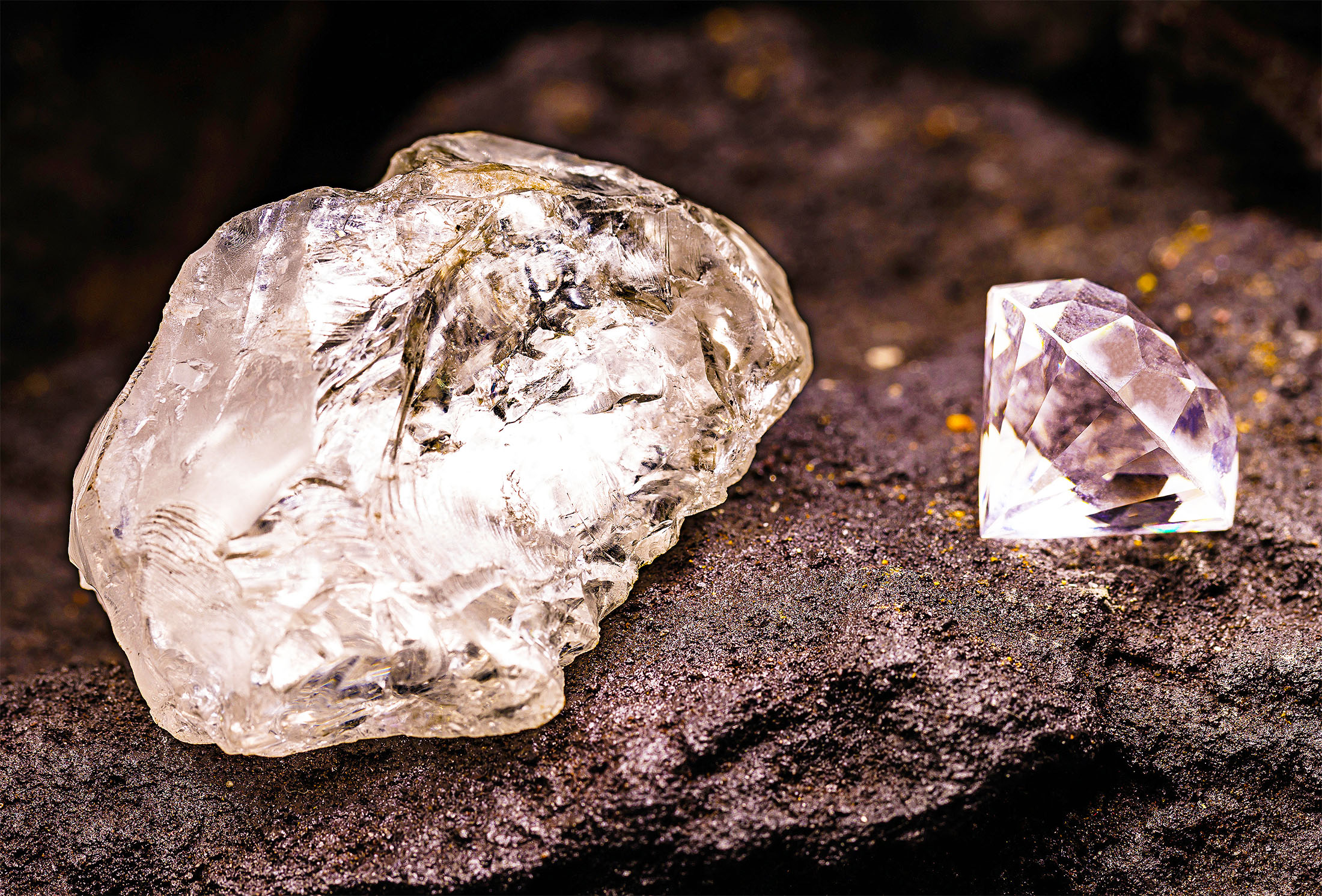Botswana has once again made headlines in the diamond industry with the discovery of a colossal 2,492-carat diamond, marking it as the second-largest rough diamond ever found. This remarkable find was unearthed at the Karowe mine, operated by Lucara Diamond Corp., a Canadian mining company. While the quality of the gem has yet to be thoroughly evaluated, the sheer size of the diamond places it in a league of its own, further cementing Botswana’s status as a key player in the global diamond market.
Botswana’s Legacy in Diamond Production
Botswana is renowned for its rich diamond reserves, consistently ranking among the top diamond producers globally. In 2023 alone, the country’s diamond mines generated an astounding $3.28 billion in revenue. This economic prowess is largely attributed to the country’s well-managed diamond industry, which has been a cornerstone of Botswana’s economy for decades.
The discovery of the 2,492-carat diamond at the Karowe mine is not an isolated event. This mine has been the site of several significant diamond discoveries in recent years, including the 1,758-carat Sewelo and the 1,109-carat Lesedi La Rona. These finds have not only brought global attention to Botswana but have also highlighted the technological advancements in diamond mining, particularly in the methods used to detect and extract these precious stones.
The newly discovered diamond, although still pending a thorough evaluation, is already being hailed as a major milestone in the diamond industry. With a weight of 2,492 carats, it ranks as the second-largest rough diamond ever discovered, surpassed only by the legendary Cullinan Diamond. The Cullinan, found in South Africa in 1905, weighed an extraordinary 3,106 carats and was later cut and polished to become part of the British Crown Jewels.
The Karowe mine’s latest find adds to Lucara Diamond Corp.’s impressive track record of discovering some of the world’s most significant diamonds. The mine uses cutting-edge X-ray transmission (XRT) technology, which plays a crucial role in identifying and recovering high-value stones from the primary ore body. This technology is instrumental in ensuring that large diamonds are recovered intact, minimizing the risk of damage during the extraction process.
Lucara’s Chief Executive Officer, William Lamb, emphasized the importance of this technological approach, stating, “The ability to recover such a massive, high-quality stone intact demonstrates the effectiveness of our approach to diamond recovery.” This discovery not only showcases the potential of advanced mining technologies but also underscores the ongoing relevance of Botswana’s diamond industry on the global stage.
The Current State of the Diamond Market
The discovery of this monumental diamond comes at a challenging time for the global diamond market. The industry is currently experiencing a downturn, with prices falling to their lowest point in four years. Botswana, in particular, has been hard-hit by this slump, with diamond sales plummeting by 49% in recent months.
Several factors have contributed to this decline. During the COVID-19 pandemic, the diamond market experienced an unexpected boom as consumers redirected their spending from travel and entertainment to luxury goods, including diamonds. However, as the world has emerged from the pandemic, demand for diamonds has significantly decreased. This drop in demand has been further exacerbated by economic slowdowns in key markets such as China and an oversupply of synthetic diamonds, which have increasingly captured consumer interest due to their lower cost and perceived ethical advantages.
The oversupply of synthetic diamonds poses a particular challenge to the natural diamond industry. These lab-grown diamonds, while chemically identical to natural diamonds, are produced in controlled environments, making them more affordable and appealing to a growing segment of consumers. This trend has pressured natural diamond prices and forced industry players to reconsider their strategies to maintain competitiveness.
Botswana’s Response to Market Challenges
In response to the challenges facing the diamond industry, Botswana has begun to implement new policies aimed at securing the long-term viability of its diamond sector. One such measure is the introduction of a proposed law requiring mining companies to sell a 24% stake in their operations to local investors once they receive a mining license. This move is designed to ensure that a larger share of the profits from diamond mining remains within the country, benefiting the local economy and creating more opportunities for Botswana’s citizens.
The government also reserves the right to acquire the 24% stake itself, further strengthening its control over the diamond industry. This policy shift reflects Botswana’s broader strategy of resource nationalism, where the state seeks to increase its share of revenue from natural resources. By mandating local ownership, Botswana aims to foster greater economic participation among its citizens and reduce its reliance on foreign investment.
The discovery of the 2,492-carat diamond at the Karowe mine offers a glimmer of hope amid the current market challenges. While the global diamond industry is facing headwinds, Botswana’s continued success in unearthing large, high-value diamonds could help stabilize the market and attract renewed interest from investors and consumers alike.
Moreover, Botswana’s proactive approach to addressing market challenges, such as the proposed local ownership requirement, could position the country as a leader in sustainable and equitable diamond mining practices. By ensuring that more of the wealth generated by diamond mining stays within the country, Botswana can continue to invest in its people and infrastructure, laying the groundwork for long-term economic growth.
The discovery of the second-largest diamond ever found is a testament to Botswana’s enduring importance in the global diamond industry. As the country navigates the challenges of a fluctuating market, this monumental find serves as a reminder of the vast potential that still lies within Botswana’s mines. With continued innovation in mining technology and strategic policy measures, Botswana is well-positioned to remain a dominant force in the diamond industry for years to come.
